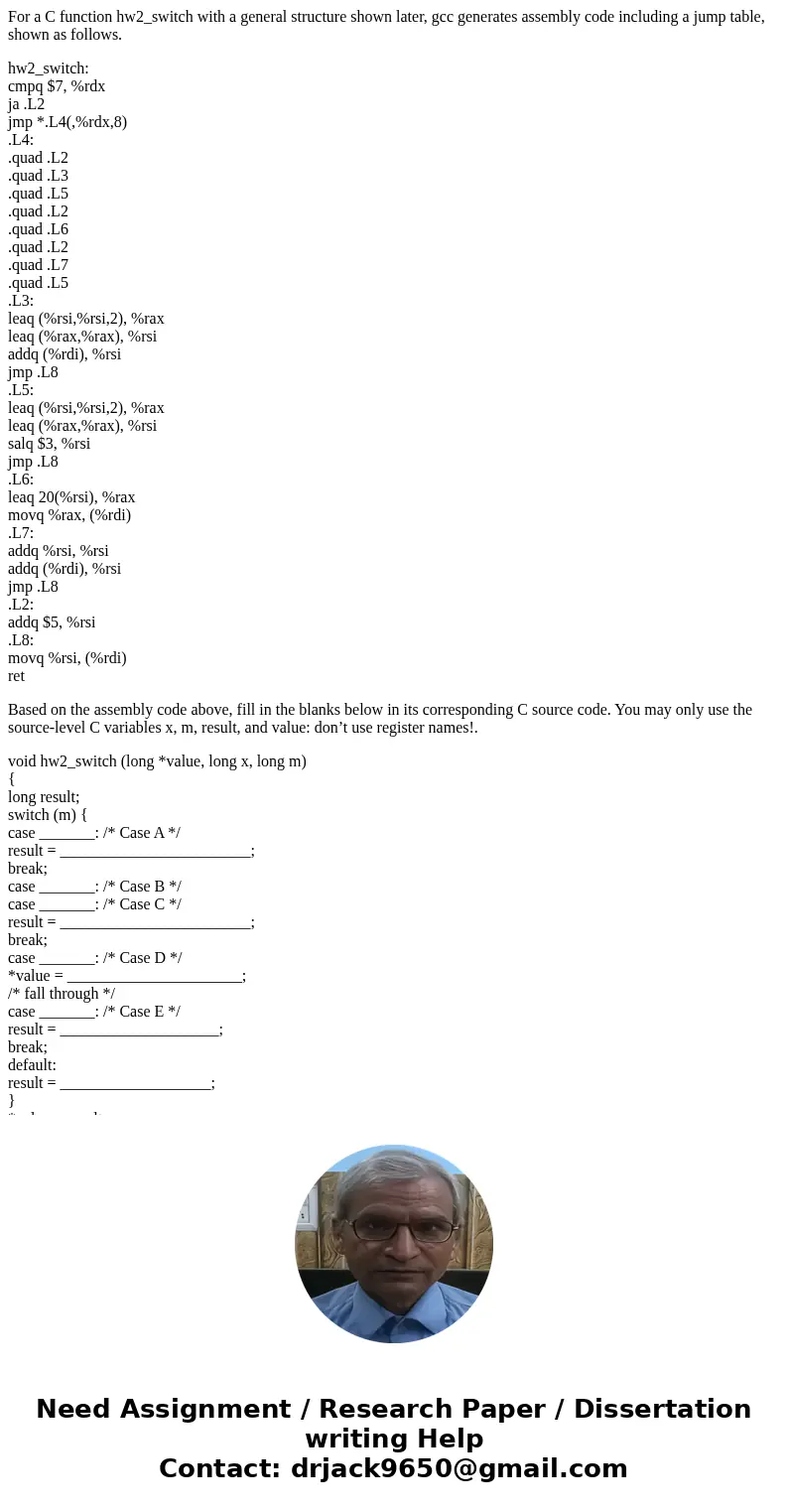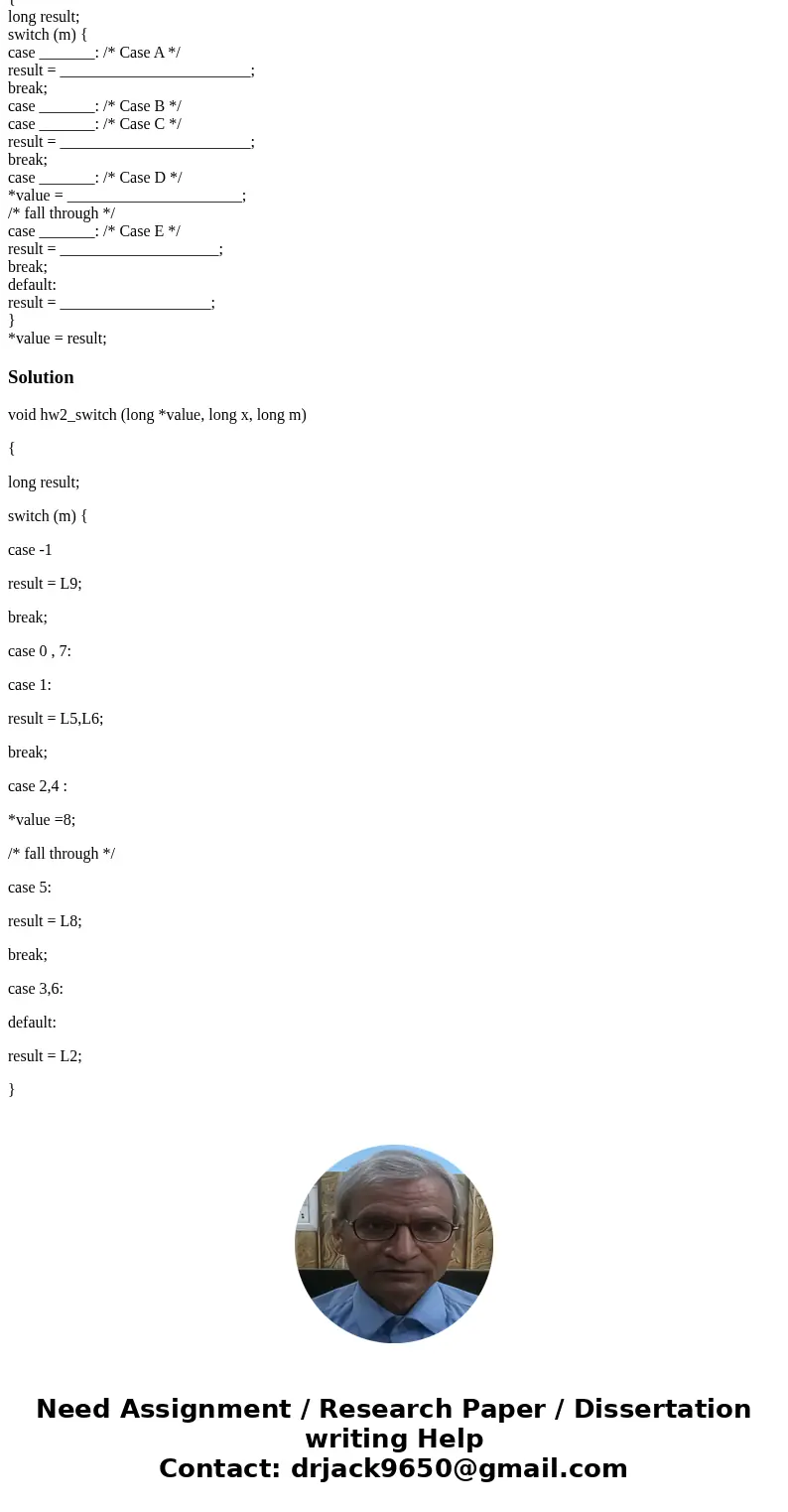For a C function hw2switch with a general structure shown la
For a C function hw2_switch with a general structure shown later, gcc generates assembly code including a jump table, shown as follows.
hw2_switch:
cmpq $7, %rdx
ja .L2
jmp *.L4(,%rdx,8)
.L4:
.quad .L2
.quad .L3
.quad .L5
.quad .L2
.quad .L6
.quad .L2
.quad .L7
.quad .L5
.L3:
leaq (%rsi,%rsi,2), %rax
leaq (%rax,%rax), %rsi
addq (%rdi), %rsi
jmp .L8
.L5:
leaq (%rsi,%rsi,2), %rax
leaq (%rax,%rax), %rsi
salq $3, %rsi
jmp .L8
.L6:
leaq 20(%rsi), %rax
movq %rax, (%rdi)
.L7:
addq %rsi, %rsi
addq (%rdi), %rsi
jmp .L8
.L2:
addq $5, %rsi
.L8:
movq %rsi, (%rdi)
ret
Based on the assembly code above, fill in the blanks below in its corresponding C source code. You may only use the source-level C variables x, m, result, and value: don’t use register names!.
void hw2_switch (long *value, long x, long m)
{
long result;
switch (m) {
case _______: /* Case A */
result = ________________________;
break;
case _______: /* Case B */
case _______: /* Case C */
result = ________________________;
break;
case _______: /* Case D */
*value = ______________________;
/* fall through */
case _______: /* Case E */
result = ____________________;
break;
default:
result = ___________________;
}
*value = result;
Solution
void hw2_switch (long *value, long x, long m)
{
long result;
switch (m) {
case -1
result = L9;
break;
case 0 , 7:
case 1:
result = L5,L6;
break;
case 2,4 :
*value =8;
/* fall through */
case 5:
result = L8;
break;
case 3,6:
default:
result = L2;
}


 Homework Sourse
Homework Sourse